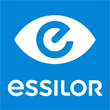- OT
- Industry
- Contact lenses
- The Varilux journey of visual comfort
Advertorial
The Varilux journey of visual comfort
Varilux has transformed the lives of presbyopes since it was pioneered in the 1950s. Professional relations manager at Essilor Ltd, Dr Andy Hepworth, looks back at the brand’s journey and talks about its latest innovation, Varilux Comfort Max


Advertorial content is paid for and produced by a sponsor, and is reviewed and edited by the OT team before publication.
07 January 2021
Varilux has evolved over the years to adapt to changing lifestyles, and in doing so has improved the lives of millions of presbyopes.
Our latest innovation, Varilux Comfort Max, was inspired by the need for increased postural flexibility, allowing wearers to see naturally without having to struggle to find the right gaze direction. The prolonged use of screens is known to be linked to discomfort1 when people adopt rigid postures.
It is incredible to think about the multitude of different electronic devices we use on a daily basis, and how often we are looking at them. In the same way that it is important to stretch our legs during a long flight, we need to spare the eyes from excessive and prolonged strain. Those discomforts are particularly true for presbyopes who wear progressive addition lenses (PAL).
Here, I look back at the Varilux journey and how it has continued to advance through a series of technological innovations, setting the bar for visual comfort.
Varilux timeline
After trying his father’s bifocals in 1950, Bernard Maitenaz considered the conceptual idea of a progressive lens. After several years of uphill struggle, against optical professionals not believing it to be possible, in 1959 Varilux 1 was the first ‘Progressive Power Lens’ design to be launched. Then Varilux 2 arrived in 1972, quickly establishing itself as the best way to correct presbyopia. By 1978 12,000 people were wearing Varilux lenses.
A key landmark in independent research was the International Presbyopia Symposium, which Essilor sponsored, bringing together academic research from across the world, in particular the great work of Dr Irvin Borish of the University of Houston.
It was this research that led to the launch of globally the most dispensed PPL design, Varilux Comfort, offering the wearer a more comfortable posture while reading.
The Varilux Comfort lens was indeed the first design, in 1993, to understand the great importance of the lower part of the intermediate channel (85% Add) when a user was reading a hard copy document.
In 2017 Varilux X-Series delivered onto the end wearer a design that allows them to see clearly within arm’s reach to accurately capture detail from a digital screen.
Fast forward to 2020 and we have the launch of Varilux Comfort Max, where Essilor’s research and development team used its LiveOptics process to investigate postural flexibility for the first time.
Varilux Comfort Max
Supported by the innovative Flex Optim technology, Varilux Comfort Max lenses improve postural flexibility for existing and new PAL users by expanding the useful vision zone in the lens and offering wearers a broader range of head movements for an increased visual comfort throughout the day.
The useful vision zone is stretched by up to 46% across vision distances2. This zone is unique to every patient, maximising the range of gaze directions.
Patients can adopt up to 258 more postures to see sharply3, compared to the previous generation of Varilux Comfort. With Varilux Comfort Max lenses, patients can make up to 495 different body postures when looking at a computer or desktop screen.
Tested using Essilor R&D’s LiveOptics process, which combines the latest optical research with real-life wearer testing. The new advanced avatar simulation mathematically modelled the conditions of an infinite number of real-life vision tasks in order to refine the design before live testing taking into account visual acuity as well as gaze and postural effort.
Among reasons for not getting equipped with a PAL, the fear of discomfort and nonadaptation remains high. Comfort is essential for all PAL wearers, especially in today’s digital environment.
We therefore developed a new varifocal lens that provides increased sharpness and comfortable vision throughout the day. We are confident that the new lens could also convince people who never tried a varifocal lens beforehand to take the leap.
Wearer tests have been really positive so far with nine out of 10 new PAL wearers wanting to continue wearing Varilux Comfort Max4,5.
This is an exciting development for ECPs wanting to offer the best visual solution to their patients, and will help entice younger patients to try a varifocal lens for the very first time.
References
- Koo SJ (2016). Effect of duration of smartphone use on muscle fatigue and pain caused by forward head posture in adults. J Phys Ther Sci.; 28(6):1669-72.
- vs. Varilux® Comfort New Edition. Average percentage gain in area considering three prescriptions (-4 Add 2, 0 Add 2 & +4 Add 2), five target distances (40 cm, 60 cm, 1 m, 2 m and 5 m) and maximum visual acuity loss of 0.15 logMAR.
- Essilor R&D avatar simulations 2019. Increase in the total number of head positions vs Varilux® Comfort New Edition lens considering a Plano Add 2 prescription, two target objects (at 65 cm and 76 cm) and maximum binocular visual acuity loss of 0.15 logMAR. A head position is defined as a one-degree variation in the vertical or horizontal head angle
- Varilux® Comfort Max – Among new varifocal lens wearers – Eurosyn – FR – 2019 – N=53
- Wearers who answered 'yes' – yes/no to ‘want to continue wearing Varilux Comfort Max lens‘ – n=49/53 new PAL wearers

